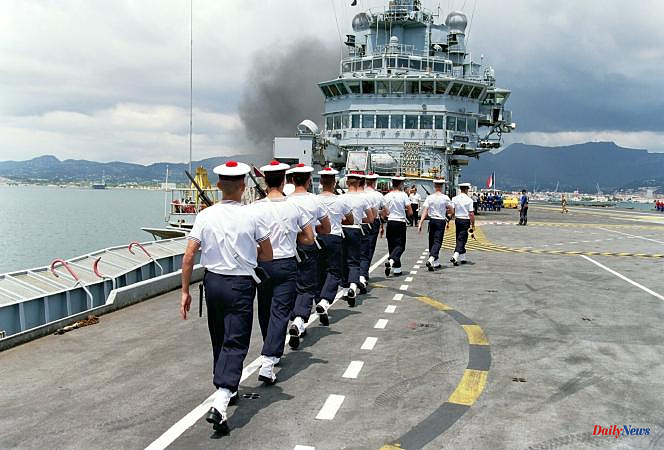What we said
How long will the agony of the former French aircraft carrier Foch last, renamed São Paulo after its resale to the Brazilian Navy in 2000? In an article of September 3, 2022, we left the former flagship of the Royal now flying the South American flag near the coast of Morocco. The ship was reduced to a common iron bar of 250 meters and 24,000 tons dragged by the tug of a Dutch company. He had left Rio de Janeiro the previous August 4 for what was to be his last trip.
Bought by a Turkish company, SÖK Denizcilik, for a paltry sum ($1.6 million), it was to be dismantled in a shipyard in Aliağa, Turkey, and its metal resold by weight. But, as the convoy approached the Strait of Gibraltar, the Turkish government turned around and refused permission, citing the presence of asbestos and other toxic products, including PCBs (polychlorinated biphenyls). Presence confirmed by expert reports, in proportions that are currently being debated.
Terrible humiliation to be considered toxic waste for someone who was a symbol of power on all the seas of the globe. Leaving the Saint-Nazaire shipyards and commissioned in 1963, the Foch, alternating with its quasi-twin, the Clemenceau, roamed wherever the country wanted to show its muscles. Replaced by the Charles-de-Gaulle, it was then bought by the Brazilian navy, which had accumulated technical setbacks until it decided to scrap it.
What has happened since
Turkey having therefore refused to welcome her, the São Paulo crossed the Atlantic again in the fall. It began to turn in circles, at the limit of Brazilian territorial waters, 25 kilometers off the port of Suape, in the state of Pernambuco. The Brazilian environment agency, Ibama, suspended the export authorization, in the name of ecological risk. But, in the name of this same risk, the local authorities have prohibited entry into the port and dry docking for expertise...
The Turkish company that acquired the aircraft carrier wanted to break the contract with the Brazilian Navy. The latter refused and said in a statement that "the responsibility for knowing what to do with it was with whoever bought it". An injunction from a Pernambuco court prohibited any abandonment by the buyer. It was against the backdrop of this legal imbroglio that, under mysterious conditions, the São Paulo set sail again on January 19. The Brazilian tug then cut the cables and spun at full throttle, abandoning the wreck in international waters, 320 kilometers from the coast, at a place where the bottom reaches 5,000 meters.
Environmental defense associations now fear that it will be sunk, perhaps by invoking a principle of maritime law, force majeure, which allows the scuttling of a vessel presenting a danger to navigation. "It would be an environmental disaster", summarizes Jacky Bonnemains, of the Robin des Bois association. Continuation and end, then? Not sure: before ending its life in a British shipyard, the Clemenceau had wandered for three years, similarly chased from one port to another. The Foch may not yet be at the end of its journey.












